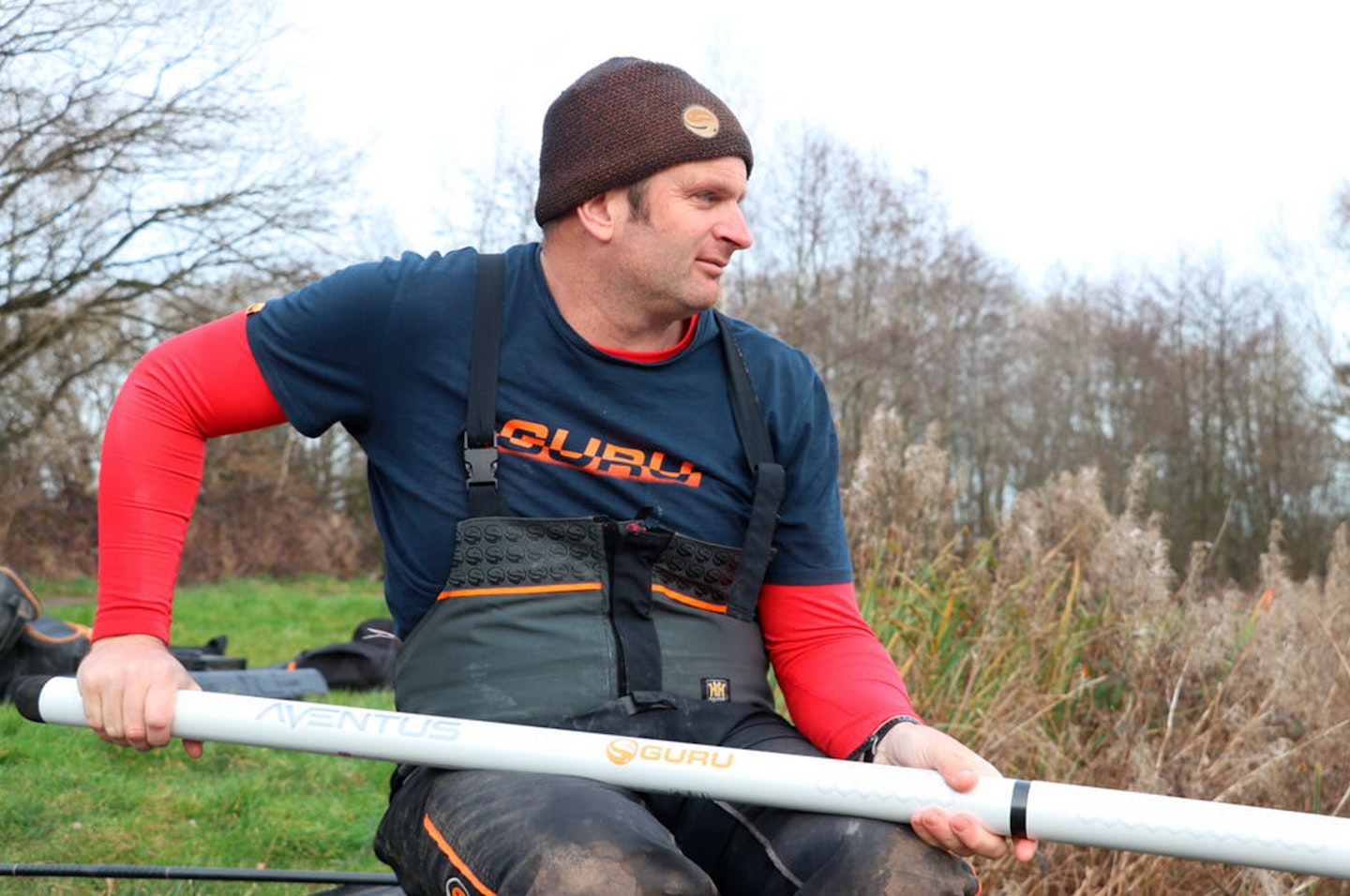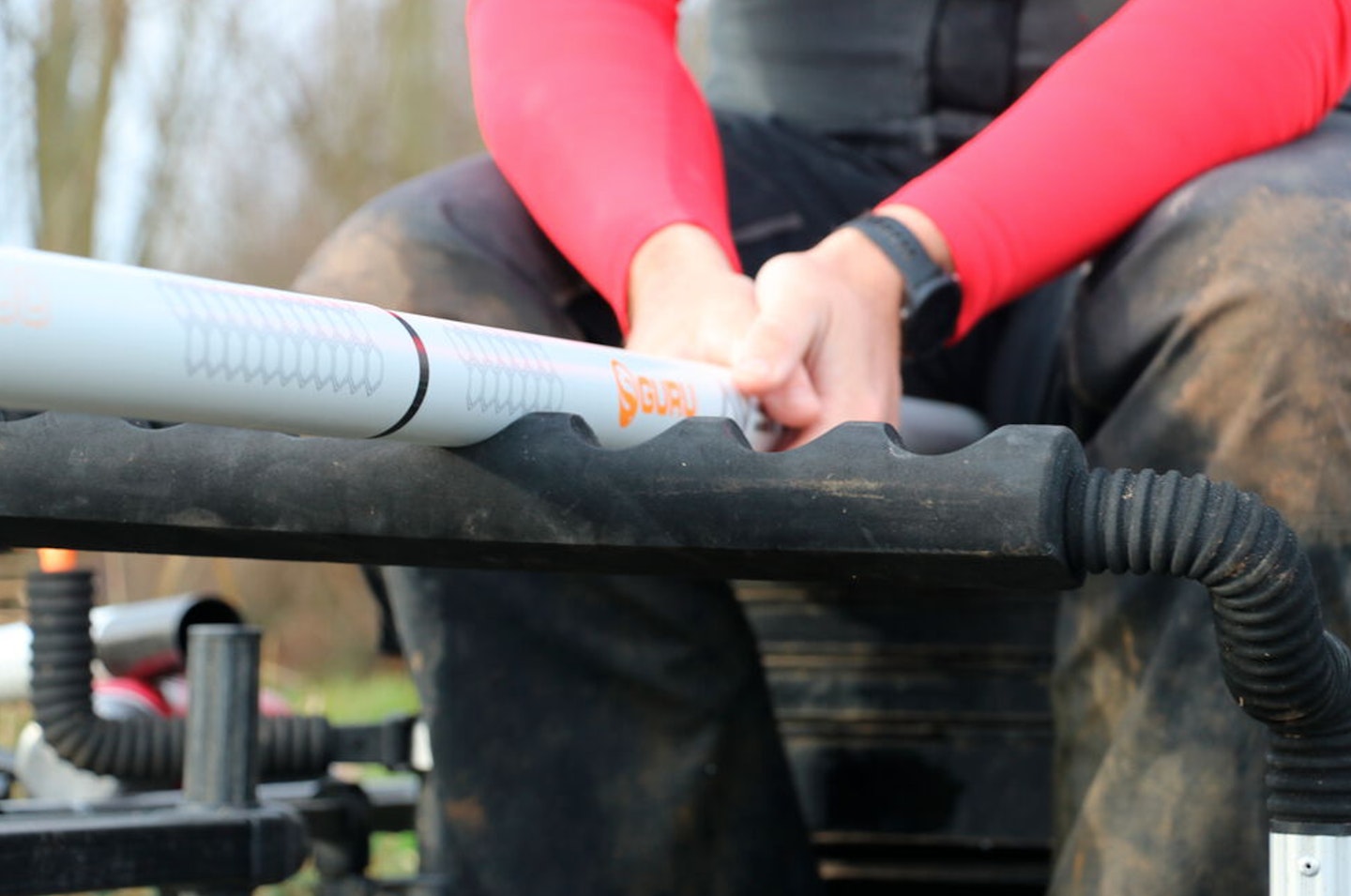Wrestling with 13m of fishing pole isn’t, at first glance, the easiest thing to master! Even though modern poles are super light, the laws of physics mean that achieving balance is essential to present the bait properly and to hit bites. For the beginner, it can be hard to know how to hold a long pole correctly.
Do it wrong, and you’ll end up with a bad back, aching arms and, worse still, the potential for broken pole sections. With a little bit of practice, though, things suddenly click into place, and you’re left wondering why you ever struggled in the first place!
The easiest way to hold the pole is the classic method of supporting it across your thighs and balancing it with your elbow and forearm. This keeps everything totally still and level, while allowing you to react to a bite in a split-second. There’s no pressure on your back and you’ll find yourself able to fish at the pole’s full length for five hours without any issues.
Across the legs
Sit with your legs at a slight angle to one side and place the pole across them, balancing it with your forearm and elbow. A strike is then simply a case of lifting your knees sharply to set the hook.

The ‘arm’ method
Although it is a comfortable way to fish, it’s not right! Striking and moving the rig is slowed right down and, over time, it’ll put a lot of pressure on your shoulder. I rarely see anyone holding a pole this way nowadays.

Stay on a level
You must have your feet and knees in the right place. Feet should be flat on the fishing platform or footplate, with your knees bent at a right angle. This ensures that the pole stays level and reduces the strain on your back.

Using a bump bar
I use my bar in two situations. The first is in windy weather when I can’t hold the pole still. The second is when I want to nail a bait to the bottom, and it’s normal to sink the pole tip under the water slightly.

